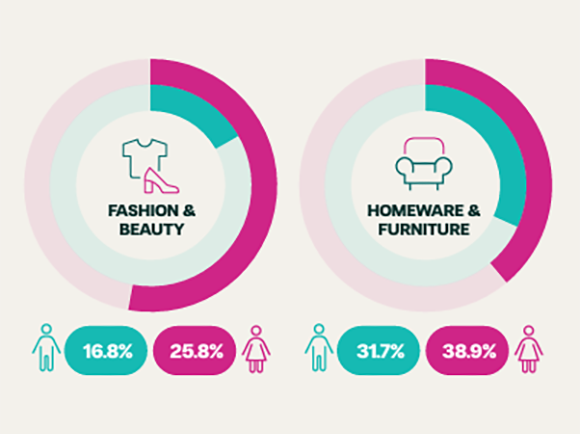How to get the most out of checkout finance in a downturn

Customer appetite for borrowing tends to go up during economic downturns, as customers find they still need to make essential purchases. Therefore, one area that sees a particular increase is interest-free credit.
This is because customers, who grow increasingly worried about taking on expensive debt during a downturn, avoid interest-bearing products and gravitate towards cheaper interest-free options.
Merchants, however, see their costs increase as a result, leading many to move away from interest-free products (which can cost anywhere between 2% and 8% per transaction).
But here lies a problem: competing needs within the market. Customers demand interest-free credit to keep their monthly costs down, while merchants would prefer to offer interest-bearing credit to do the same. Customers still need to make purchases, and merchants still need to shift product – so, what’s the solution that satisfies both parties?
Here are five pieces of advice we’ve gleaned from previous economic downturns.
1. Use interest-free credit strategically
Promoting retail finance during a sales period can be seen as a form of double-discounting. If a retailer takes money off a product to make it more affordable, then offering long-term interest-free credit at the same time is detrimental to the end goal of maximising profits.
Therefore, as a merchant, you should only advertise interest-free credit for periods when you truly need it. This doesn’t get rid of interest-free altogether – just be a bit smarter about when, and for which products you’re using it.
Take furniture as a prime example. What you might have noticed over Christmas was less advertising from furniture retailers around interest-free credit. Instead, they were focused on cash sales. It’s not that interest-free was off the market, but it was not promoted as heavily as it was during the rest of the year.
Furniture retailers would still offer customers interest-free credit in-store, but their immediate priority was to try to secure cash sales. Finance could then be held in reserves as an added incentive to improve conversion rates, rather than as a means of payment that was promoted first-and-foremost.
The first thing your sales associates should understand is how much a potential customer is looking to spend on a monthly basis. Understand the monthly budget, and you can adjust the term to match what the customer can afford.
2. Meet your customers halfway
Customers shop with a budget in mind. They know how much disposable income they have before they enter a store, meaning they know roughly what they would want to pay on a monthly basis if they chose finance.
So, it’s up to you to meet your customers in the middle when offering low-interest credit products. Either tighten the terms around longer term interest-free products, or bring in some longer-term interest-bearing or low-rate APR products to replace them.
For example, try offering interest-free credit up to 24 or 36 months. If the customer wants to have longer term finance, then offer the customer interest-bearing credit at 4.9% or 9.9% up to four or five years. Interest-bearing may initially seem off-putting or less attractive to your customers, so create rate cards to show them the difference in monthly costs between the interest-bearing and interest-free products. They will find that, in practice, there is not much of a difference in cost.
Thus, even 9.9% APR can still be an enticing offer to customers, so long as it can be spread over a long term. This allows customers to spread their payments at an affordable amount, meaning you’ll still see a significant volume of customers choosing finance.
Demonstrate the total monthly cost and then the overall cost to put your customer’s mind at ease. This will help to increase adoption of finance.
3. Don’t add barriers
In the pursuit of trying to save money, many merchants will inadvertently put up barriers in front of their customers, for instance by increasing deposit requirements.
A normal deposit requirement is around 10%. Some merchants may increase this to 25% during a recession. This is seen as reducing the average order value (as fewer customers can afford finance), which reduces the subsidy the merchant pays towards the finance product. It’s a popular move among finance directors, and one of the first dials many retailers will turn.
But in doing so, these retailers make credit less accessible to the customer, thereby reducing uptake of their finance products.
Instead, make sure you’re offering the most appropriate finance products for your product range. A full suite of tiered finance products that are linked to your product and average order values will ensure you maximise the number of customers you can accept for finance.
For example, a customer may not be eligible for 12 months interest-free credit on a sofa. The monthly repayments may be too high for your affordability criteria, so that customer is rejected. But by offering longer term finance – say, 24 months interest-free or 36 months interest-bearing – that same customer could fall within your affordability criteria and be eligible for credit. Thus, you have a better chance of securing a sale.
You may still want to provide the option to increase deposits as a way to reduce monthly repayments. But this should be flexible and in conjunction with extending repayment terms, rather than a flat limit.
Lay the information out clearly to ensure the monthly repayment amounts are easy to understand. This can be done in-store with a sales associate or online.
4. Keep incentivising
I once worked with a high-end luxury retailer, the likes of which you’d find on Tottenham Court Road and other major shopping districts. The average order values were £4,000 to £5,000 – but this retailer would never offer anything more than 12 months interest-free credit. Then they began to complain that their customers weren’t taking finance.
But why wasn’t finance working?
Twelve months interest-free was great for their existing customers, who were typically very affluent. But it wasn’t enough to make the products any more affordable, let alone to bring in new, aspiring customers.
What we found was that, if a customer could afford to spread £4,000 to £5,000 over five months, they could usually afford to spend £4,000 to £5,000 upfront. We therefore learned that what we needed was to make sure the finance products we offered fit our average order values as well.
The key takeaway here is: don’t skimp on your offering.
This retailer did not want to offer longer term interest-free credit because of the cost. They thought it might cheapen their brand. But in doing so, they failed to provide the kind of credit that would appeal to customers.
5. Manage finance at a store level
Merchants are not allowed to incentivise the sale of finance, so you must be careful about how you get your sales staff to promote these products. One thing I recommend to large retailers is to allocate the cost of finance to individual stores. This helps to manage your finance solution without risking harm to customers.
Tell each store they have full responsibility over the profit and loss of their finance. Then train the sales staff to know what finance can do to average order values and overall sales when used correctly.
Giving store staff the responsibility to manage the cost of finance aligns the performance of finance to the profitability of the store. Offering 36 months interest-free to a customer that would have accepted 24 months or even 12 months interest-free costs the store money. On the other hand, the shorter the term, the lower the cost of finance, and the higher the store’s profits.
So, by making it the store’s responsibility, staff learn to be careful not to give finance away too easily, and the store ends up better off.
This is a strategy used by the largest furniture retailers in the country to manage their staff and the control of credit.
As I mentioned in my previous blog, make sure your sales staff are qualifying the customer correctly so they can understand what that customer can afford, and tailor their finance offer accordingly.
It’s important to note that if you advertise 60 months interest-free credit, you have to let the customers know that it’s only available above a certain spend. If a customer asks for, or demands it after they have hit a certain spend limit, you as the merchant must provide it. But through training and management, you can support your customers with shorter terms without posing any risk to their financial health.
The bottom line
Economic downturns are tough. But there are ways to navigate them. Partnering with a retail finance provider with in-house experts that have navigated these environments before is key.
At Divido, our dedicated Account Directors can help get you to implement, tweak, and maximise the use of your retail finance product. Reach out to Divido today to learn more.
You might also
be interested in
Keen to know more?








